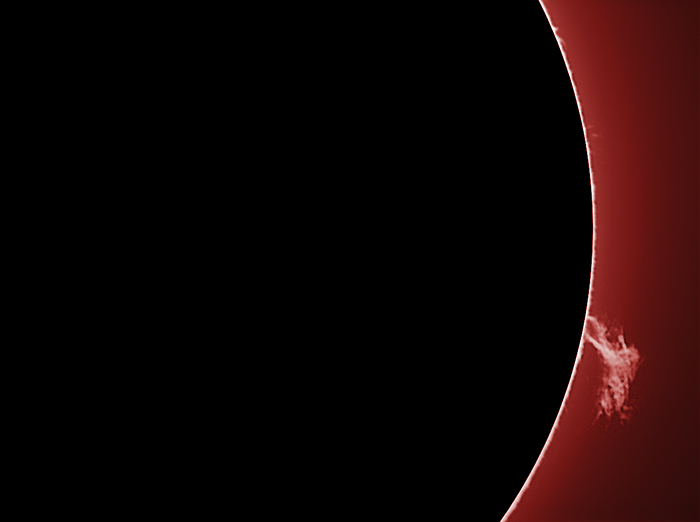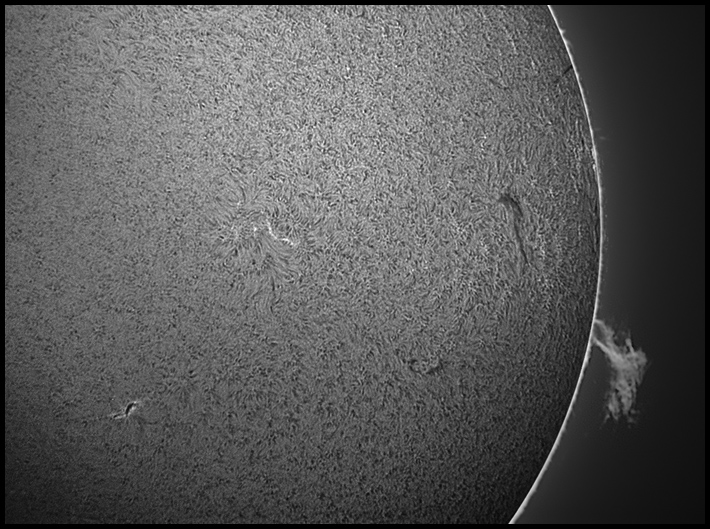| |
3/20/2011. At the Equinox, AR 1429 has rotated over the limb, and only B- and C-class flaring remains in a couple of less excited active regions. Quiet or not, the Sun is still a big ball of nuclear insanity and somebody needs to keep an eye on it:



Surface detail: 10ms x 300
Limb detail: 65ms x 300 (+6db gain)
Limb detail gets 2x the amplifier boost and 6-7x the exposure time -- about 15x the net exposure. I caught all this early in the day when the air was steady.
Except where noted, solar photos are made with a Point Grey Research Chameleon camera behind a Lunt Solar Systems 60mm THa solar telescope double-stacked wtih a 50mm front etalon for an achieved bandwidth of about 0.55 Angstroms. The telescope uses a B600 blocking filter and is mounted piggyback with an Astro-Tech 10-inch Ritchey-Chretien (carefully capped!) on an Astro-Physics Mach1GTO mount. An Acer Aspire One netbook running Point Grey's Flycap software provides camera control and capture services via USB 2.0. Images typically begin as 20 second AVI's captured at 15 fps. 300 frame clips are aligned and stacked using Registax 6 or AVIStack 2.0. The resulting files are processed via wavelet functions in Registax and / or the FocusMagic 3.0.2 deconvolution plug-in in Photoshop CS4. (PixInsight is rapidly supplanting some of those steps.) The imaging train usually includes an Orion "Shorty" 2x barlow screwed into the 1.25-inch prime-focus snout. Exposures are on the order of 4-8 ms with gain set to 10-12 db, or 12-18ms at 0 gain. The barlow is sometimes replaced by an Antares 0.5x telecompressor sandwiched between the 1.25-inch snout and the C-adapter on the PGR Chameleon; this produces a full-disk image (during most of the year) and allows exposures in the 1ms range with slightly less gain. A RoboFocus motor with a timing belt looped around the stock (or, sometimes, a Feathertouch) focus knob enables remote operation. |